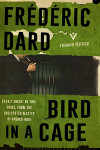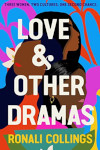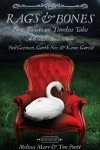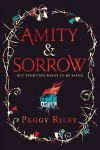Lesley Glaister – The Squeeze
Posted 20th September 2017
Category: Reviews Genres: 2010s, Angst, Crime, Domestic, Thriller
Comments Off on Lesley Glaister – The Squeeze

Tempted by the fruit of another has nothing on this.
Publisher: Salt
Pages: 286
Type: Fiction
Age: Adult
ISBN: 978-1-784-63116-1
First Published: 15th August 2017
Date Reviewed: 18th September 2017
Rating: 3.5/5
Norwegian Mats sees something changing in his marriage to his beloved Nina, and true to his thoughts, she wants to split up. He gets a job in Edinburgh, moves overseas. Meanwhile, Romania Marta, a girl from a poorer family, is lured into a hotel meeting with a man a gut tells her has bad intentions. She pushes past her worries; she is trafficked to Edinburgh to work in a brothel. Mats’ life is unstable, his new wife depressed and relying on alcohol, and Marta is trying to find a way to contact home.
The Squeeze is a fairly fast-moving thriller that looks at trafficking in 90s Scotland – girls from Romania in this case. It uses both regular chapters and a diary format to tell a tale full of narrators (but never too many).
This isn’t a particularly long book – it teeters on the 300 pages mark – but it manages to get through three periods of time without any rush. More an exploration than any edge-of-your-seat action (though due to the subject matter you will be wanting to find out what’s happening), Glaister takes the story beyond transport and prostitution to the home life of the regular person. And this is really what makes the book what it is – the lack of rush and the incorporation of the everyday of 90s Scottish living brings an added horror to what’s going on as well as a nod towards the fact that this goes on where others would not think it. Glaister uses accents to good effect, using a stereotypical Scottish dialogue that makes you think things are okay, normal, before pulling the rug from underneath you.
In this book, the trafficked girls – mostly girl, singular – are main characters. The book looks at both happy and bad times, with Glaister structuring it all carefully, considerately, but still with enough of the hopes of the reader in mind to, well, keep you reading. There’s detail in the book but not too much, again the three periods of time, the progression of it but all you need to know, is done well. There’s also a good mix of plot and character development, enough that it’d be difficult to say which is more significant. Glaister likes both.
The ending perhaps ties the book up a little neatly – it’s personal preference here all the way; does it really matter how it ends when what Glaister had to say has been completed already and achieved with aplomb? The only area in which the book does fall somewhat is in the editing – besides the somewhat broken English of Romanian Marta, which fits her, there are missing words and typos. These don’t make it difficult to understand, but are noticeable.
The Squeeze is good – well, as much as it can be given the subject matter. Glaister has produced a book that deals with a current subject of news but kept it well away from being a report or an opinion. Difficult sometimes but never so much that you feel the need to put it down.
I received this book for review.
Related Books
None yet
Emma Cline – The Girls
Posted 5th May 2017
Category: Reviews Genres: 2010s, Angst, Crime, Historical, Psychological, Social
2 Comments

The Girls (Chatto & Windus) has been shortlisted for the British Books Awards 2017. The winner will be announced 8th May.
Under the thumb.
Publisher: Chatto & Windus (Random House)
Pages: 353
Type: Fiction
Age: Adult
ISBN: 978-1-784-74044-3
First Published: 14th June 2016
Date Reviewed: 4th May 2017
Rating: 3.5/5
At 14, Evie’s life is becoming difficult. She’s got problems with her major friendship, has a crush on her friend’s brother and knows that’s a problem in itself, her father has left the family home for an apartment with his assistant, and her mother spends all her time elsewhere. Feeling the lack of love in her life, Evie is easily drawn to Suzanne and her friends, girls in well-used clothes who live on a ranch under the leadership of an older man. Evie chooses not to live with them exclusively, knowing she should go home sometimes so her mother doesn’t suspect, but the group’s influence is enough. Now, middle-aged and looking back on the time, Evie muses on the influence, her innocence and role, and the crime committed that saw the major players behind bars.
The Girls is a novel of semi-factual history, an account of a 1960s cult with a devastating end. Told from the point of an acquaintance, it is one part drugs, a manipulated idea of free love, and one part teenage anxieties and fitting in, particularly as a female.
Based on the Manson Family murders in the late 1960s, Cline’s book aligns to facts enough that her book can be considered a semi-retelling. Looking ever more closely at influence and the impact of neglect – both real and assumed – Cline’s focus on the female psych is the strongest element of the novel. Evie’s experience, enmeshed in the cult but with enough time away from it, enables Cline to study the way words, bullying, parental-filial relationships, can impact the self and the ability to be manipulated, both in general and sexually. This is of course mostly in the context of the era being studied, but Cline ensures her writing has long-term relevance, having the older Evie contemplate the experience of a young acquaintance in our present day, a girl she sees staying silent whilst her boyfriend and his friend talk, a girl who takes her clothes off to show her body when requested – though uncomfortable – in the company of both boys.
Evie’s teenage lack of self-confidence, self-worth, most terms that begin with ‘self’, is what enables her to be taken in by the group, their relative (though pretend) empathy and love for her driving her to do things that you as the reader can tell she would really rather not do – she’s always on the cusp of understanding it but lacks the forethought due to self-belief. (It should be noted this book is of a very adult nature.)
I waited to be told what was good about me. I wondered later if this was why there were so many more women than men at the ranch. All that time I had spent readying myself, the articles that taught me life was really just a waiting room until someone noticed you – the boys had spent that time becoming themselves.
The title stays true to form – whilst there are a couple of men in this book who are manipulated, it is not the same – this is a book about girls and women in the ways discussed. There are few good male characters in this book; the literal good guys Cline has painted well, but with Evie’s narrative you don’t get to see them for long and they are not given much time.
Cline’s study has much to recommend it, but beyond this the book struggles to make a mark. The writing falls somewhere between excellent and too much; on a solely literary level it’s marvellous, it’s all very poetic and descriptive but on numerous occasions it detracts from the essence of the story, Cline appearing to favour words over getting her point across. Favourite words and terms of phrase are noticeable, for example, many times something ‘stipples’ something, and every so often words are made up.
It’s literary but missing a few things – it doesn’t say anything new. The background details – the hows, whys and whens of the cult – have been left out entirely; even if the book lines up with the stereotype of cults and rests on history, the details should have been included rather than the expectation that the reader already knows the story. The historical details about the hippie life do not always ring true.
This is a book where you know the ending at the beginning – on purpose – but all the action has been left until the end meaning that you must be enjoying Evie’s musings on the lackadaisical everyday to keep going. Due to Evie’s position in the group, a lot of the lasting information is relegated to paragraphs telling you what the TV reports said, which does mean it has less of an impact than it might have otherwise, and unfortunately this low level of impact is similar throughout.
I received this book for review.
Related Books
Frédéric Dard – Bird In A Cage
Posted 24th June 2016
Category: Reviews Genres: 1960s, Crime, Domestic, Thriller, Translation
5 Comments

Making a U-turn.
Publisher: Pushkin Press
Pages: 117
Type: Fiction
Age: Adult
ISBN: 978-1-782-27199-4
First Published: 1961; 2nd June 2016 in English
Date Reviewed: 3rd June 2016
Rating: 4/5
Original language: French
Original title: Le Monte-charge (The Elevator)
Translated by: David Bellos
Albert has just returned home. His mother has died and after staying away for several years he’s returned without his girlfriend, who has also died. Coming to terms with the changes, he decides to visit the expensive restaurant he’d always wished he could visit as a child. There at a table nearby are a young girl and her mother. The mother is more than happy for him to chat to her daughter and seems interested in him, but there’s something about the woman and he just can’t put his finger on it.
Bird In A Cage is a slick novella that looks at a probable murder from the point of view of a potential conspirator. It’s a book that gets straight to the point and has no room for deviations in its storyline.
How reliable is Albert? That is a question and a half – from the start you get the feeling he can’t be trusted, but is that because of your knowledge of this genre or is it down to the character himself? For that matter how reliable is anyone here? Dard deals with few characters, a grand total of four specific ones, in fact, so there’s lots of room for suspicion. He holds your attention. Indeed due to the shortness of the tale, its pithy structure and overall atmosphere, you’re likely to finish this book within a couple of hours. Perhaps it was created this way, perhaps not, but Dard’s conciseness and detailing means you won’t feel the need to put the book down and that’s really the best way to read it.
A smidgen of mystery drips from the text – is what Albert’s seeing true? Depending on what aspect of the book is taking your fancy at any given moment you may well gain a suspicion as to what’s happening but if you do it will be only a half-formed idea. If you have spotted the clue you may well feel the age of the book more than a reader who hasn’t. This is to say the book is slightly outdated due to its atmosphere and the obvious now-historical nature of it, but it’s just so different and succinct that the age has only a minor impact. Unlike the work of Georges Simenon, who Dard has been compared to (and they knew each other), Bird In A Cage is written in such a way that it’ll likely entertain a wider age range.
The ending is deliciously ambiguous; there’s some wrapping up of the story but it’s only that which directly affects Albert – the rest is left unfinished in a literal way (it hasn’t happened yet). In saying this I’m reflecting on the way the story is told as a whole – whilst the plot is important, it’s Albert’s role in it all that is key, and the ending is one that, if you hadn’t already been doing a lot of thinking, will make you want to interact with the text. It brings a whole different flavour to the book, mixing two opposing tastes in one dish to create something that sounds unworkable but is really a triumph.
Enough with the food analogies. Bird In A Cage is a very solid, good book.
I received this book for review from the publisher.
Related Books
None yet
Amy Stewart – Girl Waits With Gun
Posted 16th September 2015
Category: Reviews Genres: 2010s, Crime, Domestic, Historical, Social
2 Comments

Taking on a rich lout.
Publisher: Houghton Mifflin Harcourt
Pages: 416
Type: Fiction
Age: Adult
ISBN: 978-0-544-40991-0
First Published: 1st September 2015
Date Reviewed: 15th September 2015
Rating: 3/5
1914: Constance and her sisters were riding their buggy when a car hit them. The owner, the manager of a silk factory, is unwilling to pay the damages and soon the girls find themselves being harassed by his group of thugs. The law courts and detectives aren’t interested and there’s little the police can do until a threat is put into action.
Girl Waits With Gun is an historical novel loosely based on true characters. Constance Kopp and her sisters are people history has forgotten. Presumably the beginning of a series, the book focuses on the sisters’ lives before Constance became a deputy.
Though there is of course a lot of almost forced helplessness, warranted for the time, the book goes a long way in showing the way women could on occasion take control of their destinies. Constance, Norma, and Fleurette are quite fearless and whilst Fleurette is flighty, Norma’s seriousness and Constance’s common sense add up to a good team. That it’s based on truth only makes it better. The social elements are well shown – the frustration of not being listened to compounded by a villain who won’t give up. Stewart talks you through the process of the courts and all the things that wouldn’t happen today.
Great is the application of humour. There are some very funny scenes, particularly near the start, that beg to be highlighted. The domestic/social issue Stewart has added, the fate of unwed mothers, holds much promise and is a good feature, as is the way she moves the sisters from the emotional and social isolation their mother’s worries left them living in to a more open environment. (In this respect, aside from Constance’s later role as deputy sheriff, Fleurette is served best, her extroversion suddenly given full reign and her desires to be the centre of attention taking to the stage, almost literally.) The sisters have been written very well; they read as real as they obviously were and interesting enough that you’ll likely want to do some research.
The book is evidently the introduction for a series; there is a lot of information in it. This means all the ground work is set and in all likelihood the next books will be thrilling, but it also means that Girl Waits With Gun is missing the necessary grip it needed in order to keep the suspense up and the plot moving forward at a steady pace. The thrill, the mystery and suspense that should have accompanied the constant threats of Kaufman’s men is not here; instead we have a general lack of the feeling of danger – staying at home, not being watched over enough – and a pacing that’s frustratingly slow.
A lot of the problem is that Stewart has focused this book on the before – the events before Constance Kopp became a deputy sheriff – and has thus had to create most of the back story. There is a lot of detailing and telling, little showing. There is a lot of repetition, odd grammar choices and anachronisms. Had the book been reduced by half it wouldn’t be so noticeable, nor would the plot meander so much.
If you like learning about the era and about women who broke the mould, you may enjoy Girl Waits With Gun, but know that the title relates more to later events, at least as far as exceptions of action go. It’s a fair story but most will want to wait until book two.
I received this book for review from Historical Fiction Virtual Book Tours.
Related Books
None yet
Georges Simenon – The Late Monsieur Gallet
Posted 8th July 2015
Category: Reviews Genres: 1930s, Crime, Mystery, Translation
4 Comments

Money and murder.
Publisher: Penguin
Pages: 155
Type: Fiction
Age: Adult
ISBN: 978-0-141-39337-7
First Published: 1931
Date Reviewed: 8th July 2015
Rating: 3/5
Original language: French
Original title: Monsieur Gallet, Décédé (Monsieur Gallet, Deceased)
Translated by: Anthea Bell
When Maigret is called upon to solve a murder case, he realises there’s more to it; something’s not quite ‘right’. There are suspects but there seems little reason for Monsieur Gallet to have been killed. The bullet and stab wounds seem slightly suspicious. And whilst there’s motive, no one person sticks out as the murderer.
The Late Monsieur Gallet is the third book in Simenon’s extensive Maigret series and whilst it’s the only one I’ve read I have to say I get the impression that various others are better.
Chances are it’s partly the translation that’s the issue. Missing commas, sentences that aren’t phrased very well. The text reads too simply.
The story is told very swiftly and much of it is facts. It can be contrived, at least in the context of our present day (more on that in a moment). People pop out of the scenery to provide titbits of information as Maigret walks past, to pop back just as quickly. Premises give way to suggestions of dinner just as you’re getting into the swing of things.
The text is outdated but easy to see why it worked at the time. It’s enjoyable if read in the context it was written in, and the work that went into the mystery is plain to see. That the story is told swiftly seems odd nowadays but one can appreciate the way Simenon doesn’t linger on sub-plots – there aren’t any. This is a crime novella and that’s how it stays; everything is focused on the mystery at hand. Maigret walks you through everything so you know exactly what happened and is happening.
And the psychology behind it all is fascinating. Simenon spends just as much time on the who as he does the why, looking into the social context. He lets his character flourish on the page, to be there in front of you even though the man’s been dead since the beginning. Solving the mystery may be key to the world at hand but looking at the deceased as a person is key to Maigret.
I get the sense that this book isn’t reflective of the rest of the series. The books can be read out of order but I would certainly recommend starting with a different one and leaving The Late Monsieur Gallet for later. It’s a perfectly fine way to pass an hour or two but is unlikely to make much in the way of a good early impression.
I received this book for review from the publisher.
Related Books
None yet.























